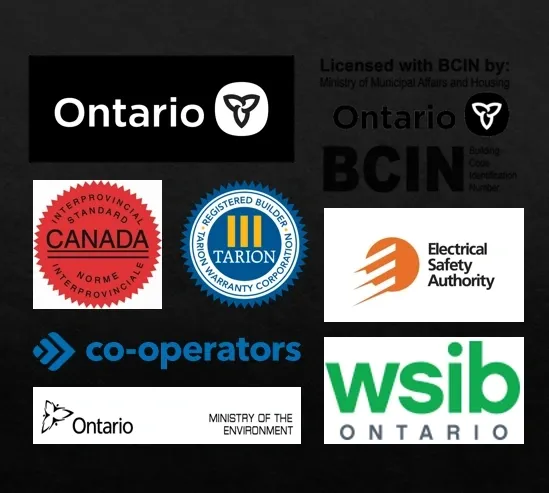Looking to start a project but don’t know where to start? Leary of the all the red tape?
Read on to figure out how we can help!
Every project will have it’s own scope of obligations to follow. The best place to start will be your local municipalities’ building department to read on which project will require a permit, and which will not.
Permits and city officials often are an entity that most people try to avoid, however it is important that your project receives initial approval to avoid potential fines. As well, it will ensure that any trades that you have working on the project are performing to building code requirements.
Once you have determined if you require a standard building permit, you will also need to ask yourself: Will your project will have any technical trades involved? Electrical, gas, and large scale plumbing projects will also require additional permitting, as well as requires trades to have special accreditations/licensing to perform the work.
During the permitting phase home-owners can draft their own plans for submission to the municipality, or they will need a representative who is B.C.I.N. (Building Code Identification Number) certified to draft their plans.
During the permitting process (when represented by a contractor) the municipality will also ask for required accreditations (Liability insurance, ESA numbers, and Tickets)
Once plans have been stamped for approval then the project can commence. The municipality will require different points of inspection depending on the project itself, though they often consist of; footing, framing, insulation/vapor barrier, plumbing, electrical, and final inspections.
If any of this sounds like too much to take on as a homeowner, then you can utilize a General Contractor!
A general contractor is an individual or entity who represents clients and is skilled in management, estimating, litigation, negotiation, and networking. All while simultaneously having a vast background in construction and construction management.
A general contractor acts as a representative for both the clientele and sub-trades. For clients, the contractor is responsible for articulating their vision, creating a cost analysis, ensuring that planning and permitting are in place, limiting liabilities, delegating to the proper trades. As well as ensuring trades are properly licensed and insured, articulating grievances or changes of scope, ensuring quality of work, and facilitating payments between clients and sub-contractors.
Take care and build on!

